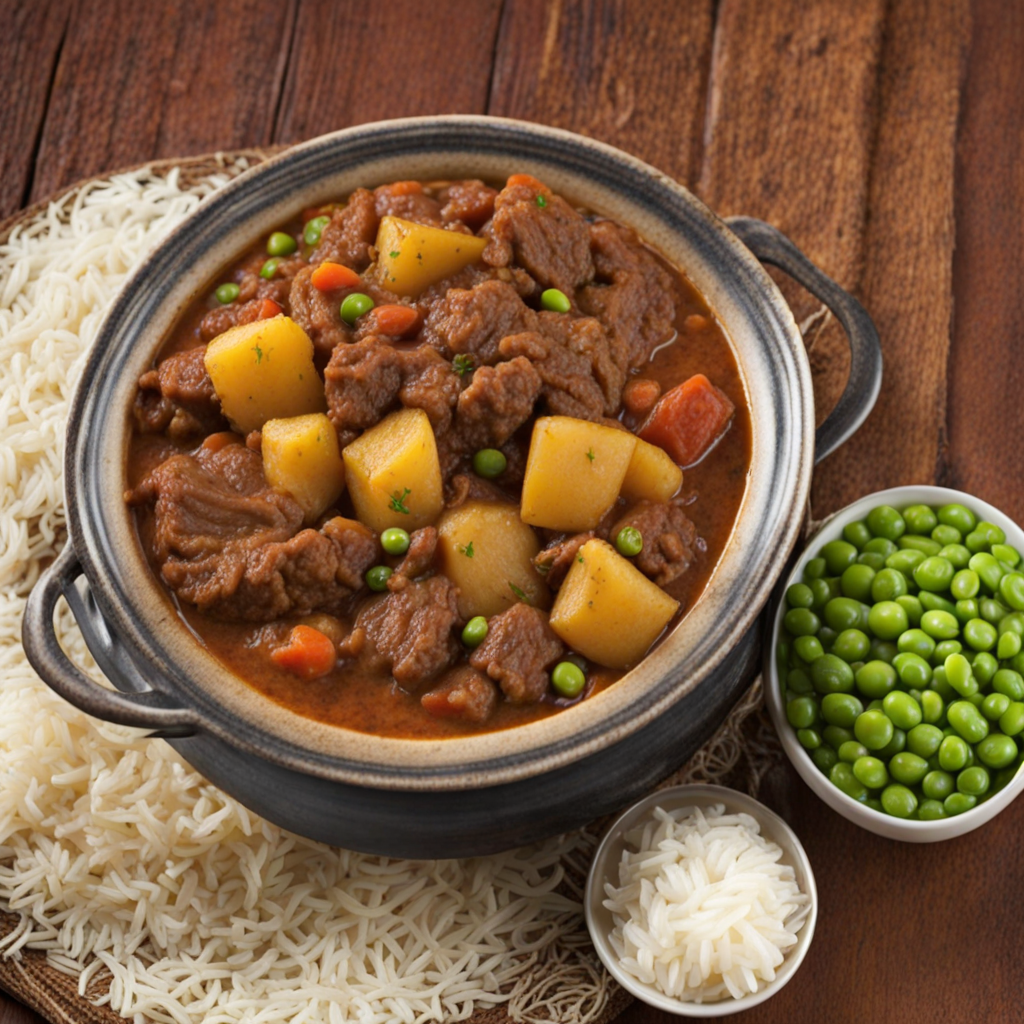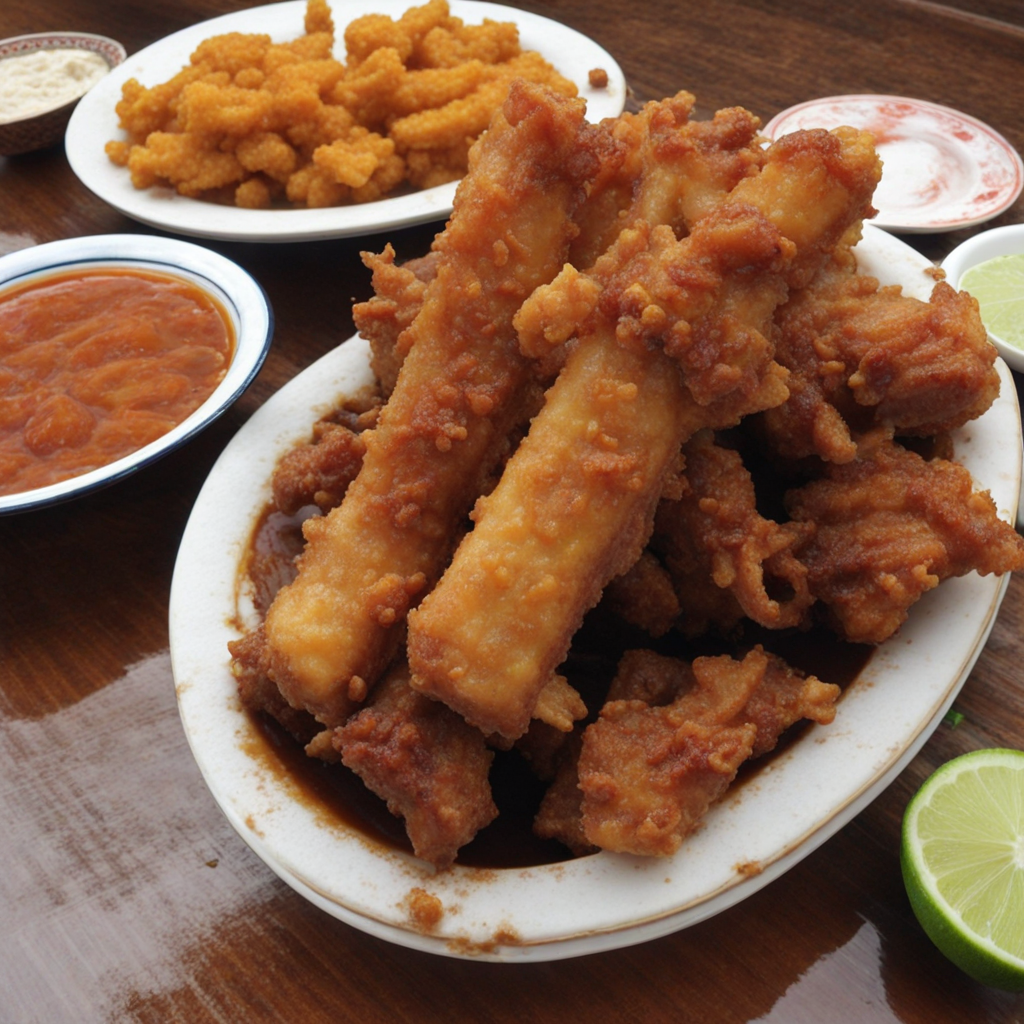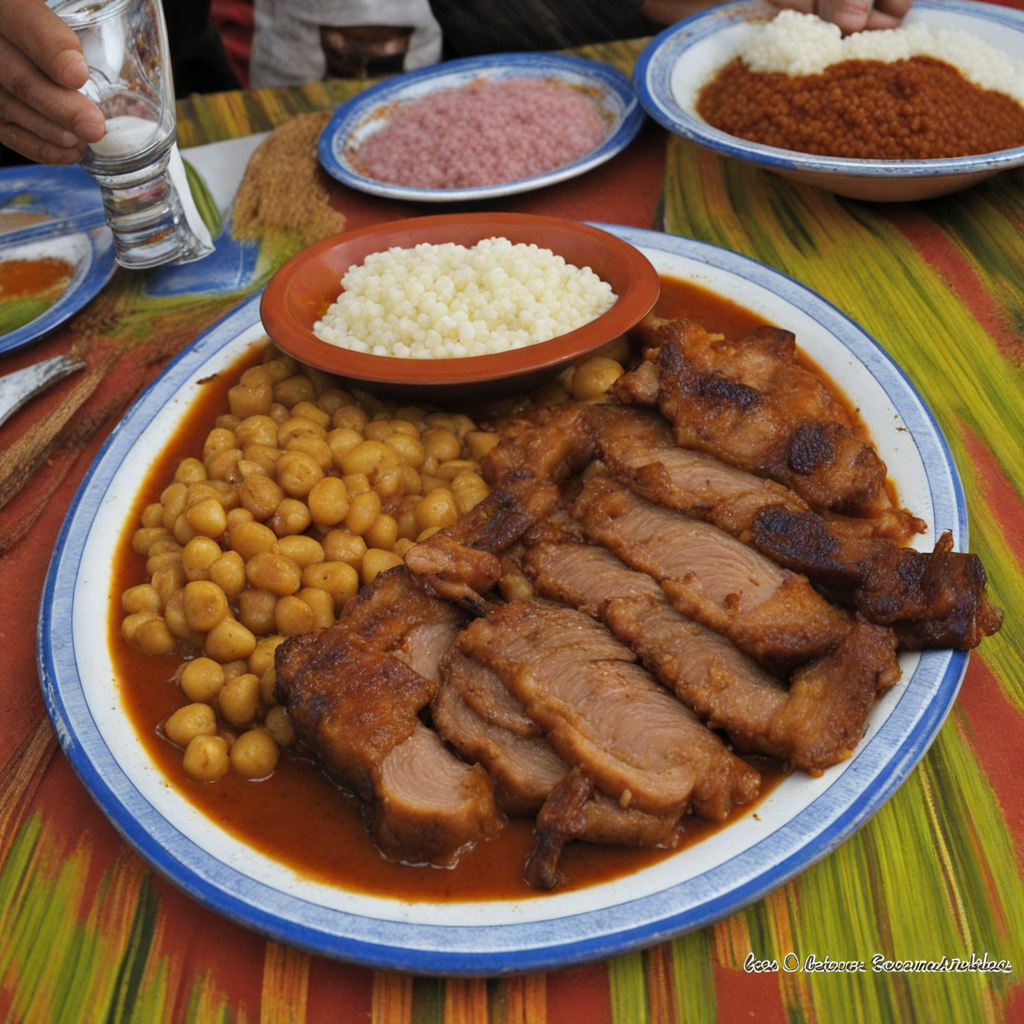Salteñas
Salteñas are a beloved Bolivian pastry, often likened to empanadas, but with their own unique twist. These delightful treats are typically filled with a savory mixture that can include ingredients like beef, chicken, or vegetables, combined with a rich, slightly sweet, and spicy sauce. The dough is made with a hint of sugar and a touch of lard, creating a flaky and golden crust that is both tender and crisp. The contrast between the hot, juicy filling and the flaky exterior makes each bite a delightful experience, offering a perfect blend of flavors that speaks to the heart of Bolivian cuisine. What sets salteñas apart from other stuffed pastries is their signature juiciness. The filling is not just a dry mixture; it is enveloped in a flavorful broth that oozes out when you take a bite, creating a delightful mess that only adds to their charm. Salteñas come in different varieties, with some featuring spicy chili peppers, while others might include olives or boiled eggs, catering to a range of taste preferences. They are typically enjoyed for breakfast or as a snack, often accompanied by a refreshing beverage, making them a versatile and satisfying option for any time of the day. Salteñas are often served with a side of ají, a spicy Bolivian sauce made from chili peppers, which enhances the flavor profile and adds an extra kick. This combination elevates the overall experience, as the heat of the ají complements the rich filling beautifully. Whether you are enjoying them from a street vendor or a local restaurant, salteñas are a culinary adventure that encapsulates the essence of Bolivian culture, inviting food lovers to discover their distinct taste and enjoy a little bite of Bolivia's culinary heritage.
How It Became This Dish
The Flavorful Journey of Salteñas: Bolivia's Beloved Pastry #### Origins Salteñas, the beloved Bolivian pastry, are an iconic representation of the country's rich culinary heritage. These savory turnovers, filled with a mixture of meat, potatoes, peas, and a unique blend of spices, are often likened to empanadas but have a distinct character and flavor profile that sets them apart. The origin of salteñas can be traced back to the 19th century, specifically to the city of La Paz, which played a pivotal role in shaping Bolivian gastronomy. The name "salteña" is believed to have derived from the word "salteña," which refers to the people from the region of Salta in Argentina. This connection is significant, as the culinary influence from neighboring countries, particularly Argentina, has been a considerable force in shaping Bolivian cuisine. However, salteñas have developed into a unique dish that reflects the local ingredients and flavors of Bolivia. The earliest known references to salteñas date back to the late 1800s, when they were sold by street vendors in La Paz. The pastry quickly gained popularity among locals and travelers alike, thanks to its portability and delicious taste. The original salteñas were likely simpler, but as culinary practices evolved, so did the fillings and preparation methods, leading to the diverse varieties we enjoy today. #### Cultural Significance Salteñas hold a special place in Bolivian culture, transcending mere sustenance to embody a sense of community and tradition. They are typically consumed as a snack or light meal, especially during the late morning or early afternoon, and are often enjoyed with a side of spicy salsa or aji, a tangy chili sauce that adds an extra kick. Their warm, comforting nature makes them a popular dish during family gatherings, celebrations, and even during the colder months when a hot, hearty snack is particularly welcome. In Bolivia, salteñas are not just food; they are a cultural symbol, representing the fusion of indigenous and Spanish culinary traditions. The filling of salteñas varies widely, with some regions favoring chicken or beef, while others incorporate ingredients like hard-boiled eggs, olives, or even sweet raisins. This adaptability reflects the diverse cultural landscape of Bolivia, where indigenous communities, European settlers, and immigrant populations have all contributed to the culinary tapestry of the nation. Moreover, salteñas are often associated with nostalgia and home. Many Bolivians recall their childhood experiences of enjoying salteñas prepared by family members or purchasing them from street vendors. This connection to personal and collective memory elevates salteñas beyond mere food, creating a sense of identity for many Bolivians. #### Development Over Time As Bolivia underwent significant social and political changes throughout the 20th century, so too did the preparation and consumption of salteñas. The rise of urbanization led to an increase in the popularity of street food, and salteñas quickly became a staple in urban areas. The demand for this delicious pastry surged, leading to the establishment of specialized salteñerías—shops dedicated solely to making and selling salteñas. In these salteñerías, skilled artisans honed their craft, perfecting the dough and filling recipes. The dough itself is a distinctive feature of salteñas—it is slightly sweet, flaky, and golden, achieved through the use of lard or butter. The filling, often enhanced with a touch of sweetness, creates a delightful contrast to the savory components. This careful balance of flavors is what sets salteñas apart from other pastries. As the popularity of salteñas grew, so did the variations. Today, you can find an array of fillings, from traditional beef and chicken to vegetarian options filled with cheese and vegetables. This evolution reflects not only the changing tastes of Bolivians but also the influence of globalization, as culinary trends from around the world make their way into local cuisines. In recent years, salteñas have also gained international recognition. Bolivian expatriates have introduced this beloved dish to various parts of the world, leading to the establishment of Bolivian restaurants and food trucks serving salteñas in cities across the United States, Spain, and other countries. This globalization of salteñas has sparked interest among food enthusiasts and chefs alike, leading to creative interpretations and fusion dishes that incorporate this traditional pastry. #### Modern-Day Salteñas In contemporary Bolivia, salteñas remain a beloved dish that is deeply ingrained in the national identity. They are often featured in culinary festivals and events, showcasing the rich diversity of Bolivian cuisine. Salteñas have become synonymous with comfort food, providing warmth and satisfaction in every bite. The craftsmanship involved in making salteñas is also being recognized as an art form. Some chefs have begun to offer gourmet versions, experimenting with high-quality ingredients and innovative flavors while still respecting the traditional preparation methods. This blending of old and new reflects the dynamic nature of Bolivian cuisine, which continues to evolve while honoring its roots. Salteñas also play a vital role in the Bolivian economy. Many families rely on salteñerías as a source of income, passing down the craft from generation to generation. The process of making salteñas can be labor-intensive, requiring skill and precision, which adds to their value as a cherished culinary tradition. Furthermore, salteñas have transcended borders, becoming a culinary ambassador for Bolivia. The pastry is celebrated not just for its delicious taste but also as an emblem of Bolivian culture. Food festivals around the world often feature salteñas, allowing people from different backgrounds to experience the flavors of Bolivia. #### Conclusion Salteñas are more than just a delicious pastry; they are a testament to Bolivia's rich culinary history and cultural identity. From their origins in the bustling streets of La Paz to their modern-day interpretations in restaurants around the globe, salteñas embody the fusion of tradition and innovation. They serve as a reminder of the interconnectedness of food, culture, and community, and their enduring popularity speaks to the timeless appeal of this beloved Bolivian dish. As you take a bite of a warm, flaky salteña, you are not just savoring a meal—you are participating in a rich tapestry of history, culture, and shared experience that continues to evolve and delight.
You may like
Discover local flavors from Bolivia







